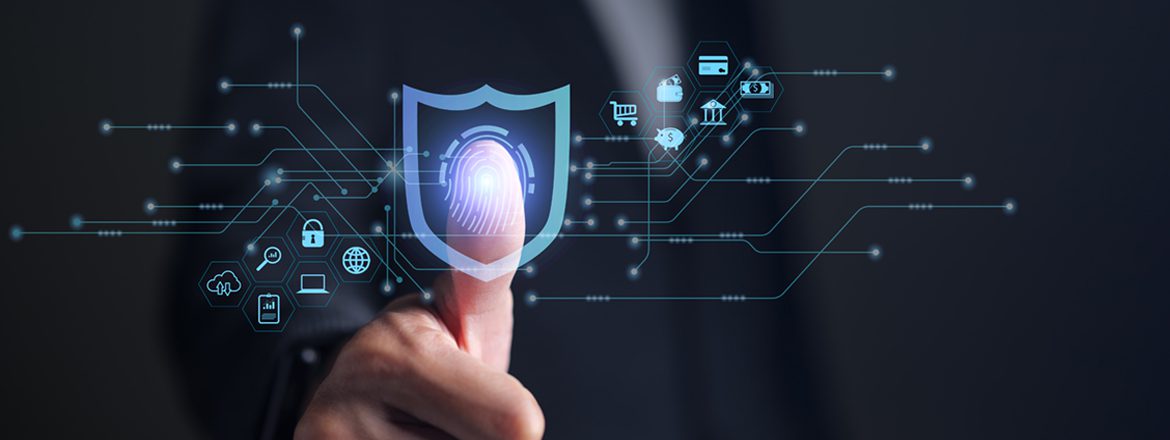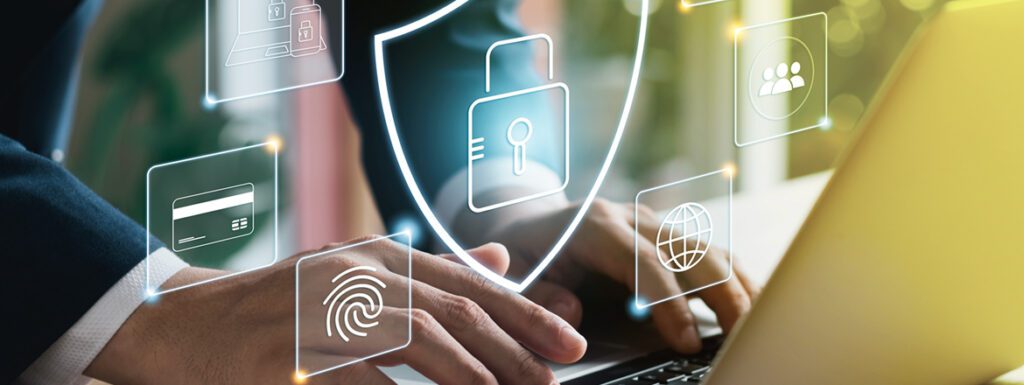In today’s digitalized world, new risks emerge every hour of every day and with the majority of organizations’ operations being online, it is easier than ever for cyber criminals to target large enterprises.
The cyber-crime industry is rapidly growing and unfortunately, it is increasing its targeting of organizations and governments globally. Therefore, just having a cyber security plan is no longer adequate. If enterprises don’t have a cybersecurity plan that is continuously audited to ensure compliance with the latest practices, the risk of monetary and reputational damage issues increases exponentially.
This comprehensive guide explores the purpose, benefits, and challenges of enterprise cybersecurity, providing insights into the changing dynamics and the crucial role of cybersecurity training.
How Has Cybersecurity Changed Over the Years?
As a result of the rapid acceleration in technology and specifically artificial intelligence, cyber security and cyber-crimes have changed in a variety of ways, particularly in the number of attacks, the cost and total money invested into enterprise cyber security.
The total number of cyber-attacks have increased massively in recent years, increasing globally by 125% through 2021 and experts predicting Internet of Things (IoT) cyber-attacks alone to double by 2025.
Additionally, data breaches cost businesses an average of $4.35 million in 2022, which was up from $4.24 million in 2021. The annual cost of cyber crime is also forecasted to increase, from $3 trillion in 2015, all the way up to an estimated $10.5 trillion in 2025.
How is This Impacting Organizations?
As the frequency and expenses associated with cyber-attacks continue to rise, organizations find themselves compelled to allocate greater financial resources into their cyber security. In just 3 years, global spending from within the cyber security industry has increased from 40.8 billion U.S dollars in 2019, to 71.1 billion U.S. dollars in 2022, which massively exceeded the ‘best-case scenario’ forecast predictions of 60 billion U.S. dollars in 2022.
This increase is also reflected in the market value, as the global cyber security market was worth 173.5 billion U.S. dollars as of 2022 and is predicted to reach 266.2 billion U.S. dollars by 2027, which, based on previous data, it is likely to exceed.
Why is Enterprise Cybersecurity Important?
Data Security
Data security is particularly important for enterprises, as they typically have access to a larger volume of sensitive data, including sensitive customer data, company data, and intellectual property. One important objective of an enterprise security program is to protect this data against unauthorized access and potential misuse.
Multi-Layered Protection
One of the most common cyber-attack methods used by cyber criminals is account takeover (ATO) attacks. These attacks aim to exploit an employee’s genuine access to a system through the use of compromised login credentials. By implementing multi-factor authentication (MFA), these attacks become increasingly difficult to carry out, as this requires the attacker to gain access to additional authentication accounts/platforms to access a single account.
Risk Management
An effective risk management practice consists of four steps; the identification, assessment, mitigation and monitoring of potential security risks and threats to an organization’s information systems.
The identification process initially involves identifying potential security risks and threats to an organization’s information systems. This includes assessing vulnerabilities in hardware, software, network infrastructure, and human factors.
Once risks are identified, they need to be assessed in terms of their potential impact and likelihood. This helps prioritize which risks should be addressed first. To effectively categorize and rank risks, a risk matrix or a scoring system can be used.
After assessing risks, organizations develop strategies to mitigate or reduce these risks to an acceptable level. Mitigation strategies might involve patching software vulnerabilities, enhancing access controls, or conducting security awareness training.
As discovered within this article, cyber security risks are dynamic and can change over time. Continuous monitoring is essential to detect new vulnerabilities, threats, or changes in the risk landscape.
Regulatory Compliance
Regulatory compliance is another key objective of an enterprise cybersecurity program, as enterprises are subject to various regulations and legal obligations related to the protection of sensitive data and their business operations. Non-compliance can lead to legal consequences, fines, and penalties. Staying compliant ensures that the organization operates within the bounds of the law and more importantly, prevents the likelihood of data breaches and unauthorized access to data.
Company-Wide Learning
An organizational awareness of effective cyber security measures has a multitude of benefits for your enterprise’s cyber security, such as the reduction of insider threats, enhanced collaboration and the improvement of the overall culture towards cyber security.
Most Common Cyber Threats for Large Organizations
Ransomware Attacks
Ransomware attacks are a type of malicious cyberattack in which cybercriminals encrypt an organization’s data and then demand a ransom in exchange for a decryption key or to regain access to the system. Ransomware attacks are a lucrative and increasingly prevalent form of cybercrime and can have devastating financial and operational consequences for larger organizations.
Phishing / Whaling Attacks
Phishing and whaling are both types of cyberattacks that rely on deceptive tactics to trick individuals into revealing sensitive information or taking specific actions, often for malicious purposes.
For example, phishing attacks are when an attacker sends an email that appears to be from a legitimate source, such as a bank or other trusted organization, to trick the recipient into providing sensitive information, such as passwords or credit card numbers.
Whaling attacks in cyber security are highly targeted and focus on specific individuals within an organization’s network who hold positions of authority, such as executives, CEOs, or high-ranking officials. The goal is to compromise these individuals to gain access to valuable corporate information or conduct further attacks.
Distributed Denial of Service (DDoS) Attacks
A DDoS attack is a malicious attempt to disrupt the normal functioning of business networks, services or website/s by overwhelming them with a flood of traffic from multiple sources. DDoS attacks can be highly damaging to large organizations, as they can cause excessive downtime, financial losses and have the potential to damage their reputation.
Advanced Persistent Threats (APTs)
Advanced Persistent Threats (APTs) are a category of sophisticated, long-term cyberattacks conducted by highly skilled threat actors, often with specific goals such as espionage, data theft, or gaining long-term access to a targeted organization’s systems and data. APTs are characterized by their persistence and focus on achieving their objectives over an extended period. APTs present a higher risk for large organizations, as the increased value/scale of the data available provides an increased incentive for a medium-long term attack.
8 Best Practices for Enterprise Cyber Security
Carry Out Regular Security Assessments And Penetration Testing
Regular security assessments and penetration testing are critical for identifying vulnerabilities in systems and applications within organizations, as this allows for weaknesses to be uncovered before cyber criminals are able to exploit them.
Implement Early Detection Systems
To minimize the impact of any cyber-attacks on organizations, early detection systems and proactive measures should be implemented into your enterprise’s cyber security. Intrusion detection and prevention systems (IDPS) and security information and event management (SIEM) solutions can be used for identifying suspicious activities and potential threats in real-time. These systems enable rapid response, minimizing the impact of security incidents and reducing the window of opportunity for attackers.
Utilize An End-to-end Data Protection Software
End-to-end data protection software ensures that sensitive information is safeguarded throughout its entire lifecycle, from creation to storage and transmission. This comprehensive approach helps prevent data breaches and ensures compliance with data protection regulations. This process can be widely automated using Artificial Intellgence (AI), which can be implemented through DevOps software creation or a wide range of options in AI corporate training.
Ensure Data Encryption
Data encryption is a fundamental safeguard for protecting organizational data in all forms. Strong encryption tools and algorithms should be implemented to safeguard sensitive data, making it unreadable to unauthorized parties even if it is intercepted or stolen.
Prioritize Crisis Management
Developing a robust crisis management plan is essential for responding effectively to cyber security incidents. This plan should outline roles, responsibilities, and procedures for incident response, communication, and recovery, helping your organization mitigate damage and recover quickly from external attacks.
Backup Your Data
In the event of a ransomware attack, data corruption, or hardware failure, having up-to-date backups ensures that your organization can recover essential data and systems without paying ransoms or suffering extended downtime.
Educate Employees
Your employees are your first line of defense against cyber threats. Therefore, a comprehensive cybersecurity training and awareness program can aid your organization in minimizing the number of and severity of cyber-attacks. Employee Cyber Security Awareness Training can empower your workforce to recognize and respond to threats, including phishing emails, social engineering, and other forms of suspicious behavior.
Post-incident Reviews And Security Audits
After a security incident, conducting post-incident reviews and security audits is essential for learning from the experience and further improving cyber security within your organization. Post-incident reviews will help to identify additional weaknesses in your defenses, refine incident response procedures, and ensure continuous improvement in your cyber security strategy.
Challenges in Enterprise Cyber Security
The Cloud
The use of cloud computing can be difficult within enterprise cyber security, due to the changing landscape and the unique characteristics of cloud environments. In physical environments, organizations have direct control over their infrastructure and can easily implement security measures within their premises. In the cloud, much of the critical infrastructure is abstracted and managed by the cloud service provider, leading to reduced visibility and control. This can make it harder to monitor and secure the entire environment effectively.
Additionally, many organizations use multiple cloud providers or a combination of cloud and on-premises resources, creating complex hybrid or multi-cloud environments. Managing security consistently across these environments can be intricate and requires specialized security tools and expertise. Moreover, multi-cloud environments can make it increasingly difficult to adhere to legal regulations, leading to extensive planning and monitoring and potentially increased organisational costs.
The Internet of Things (IoT)
The Internet of Things (IoT) presents challenges for enterprise cybersecurity due to its unique characteristics and the complexity it introduces to an organization’s digital landscape.
IoT involves a vast number of connected devices, ranging from sensors and cameras to industrial equipment and smart appliances. Managing the security of such a large and diverse ecosystem can be overwhelming and requires extensive monitoring to ensure all devices are secure.
Additionally, data transmitted between IoT devices and back-end systems may not always be encrypted or may lack the ability for data to be encrypted, which can expose data to interception and tampering.
Insider Threats
Insider threats pose a significant challenge in enterprise cybersecurity due to the unique risks they present, and the complexities associated with mitigating them.
An initial factor is the levels of trust and access provided to insiders. Insiders have legitimate access to an organization’s systems, data, and facilities. They are trusted employees, contractors, or partners, which makes it difficult to distinguish or predict motivations for threats. These threats can come from various motivations, including financial gain, personal grudges, espionage, or unintentional actions due to negligence or lack of awareness.
Human error also plays a large role in the risk of insider threats, as there is always the chance of unintentional actions, such as misconfigured security settings or the mishandling of sensitive information. Addressing these issues requires a robust cyber security training and awareness program.
Security Patching and Vulnerability Management
There are various factors within vulnerability management that pose challenges in enterprise cybersecurity, such as scale of modern IT systems and the complexity of software and hardware ecosystems.
Large organizations often have thousands or even tens of thousands of devices and systems, including servers, workstations, mobile devices, and networked appliances. Identifying and patching vulnerabilities on all these assets is a significant task and can be very difficult to maintain.
Additionally, not all vulnerabilities are equally critical. Therefore, patch management teams must prioritize patches based on factors such as the severity of the vulnerability, the potential impact on the organization’s assets, and the likelihood of exploitation. This then requires the additional task of analyzing all vulnerabilities and their severity, increasing time and resources needed.
Data Privacy Regulations
Costly and dangerous data leaks have plagued the news in recent years, resulting in new, more stringent data protection regulations. Designing and automating policies to support these regulations is a constant challenge due to their complexity and ensuring policies are followed by a growing team is even more difficult.
Additionally, some regulations, such as the General Data Protection Regulation (GDPR), have extraterritorial reach, affecting organizations worldwide that process or store data related to individuals in the regulated region. Compliance efforts may need to extend beyond an organization’s geographical boundaries and if they don’t, it could result in significant fines and penalties.
Elev8’s Cybersecurity Solutions for Enterprises
Elev8 specializes in both enterprise and government cyber security solutions. We empower our clients with cyber security solutions that can be effectively implemented within enterprises. Get in touch with a member of our expert team today to find out how your organization can transform its cyber security using our digital transformation programs.
Frequently Asked Questions (FAQ)
What Is Enterprise Cybersecurity?
Enterprise cybersecurity refers to the implementation of new strategies, principles, and practices that work towards protecting an organization’s data, digital assets, information security systems, and network infrastructure from cyber-attacks and threats. Effective enterprise security architecture deals with preventing and alleviating any damage from a data breach or cyber-attack such as ransomware attacks, social engineering, and software vulnerabilities.
What Is The Difference Between Cyber Security And Enterprise Security?
Cybersecurity and enterprise cybersecurity are concepts that have similar characteristics, but they ultimately differ in scope and focus: Cyber security is a broad term that encompasses the protection of all digital systems, networks, and data, regardless of the context or organization type. However, enterprise cyber security is a subset of cybersecurity that specifically refers to large organizations, corporations, and businesses.



